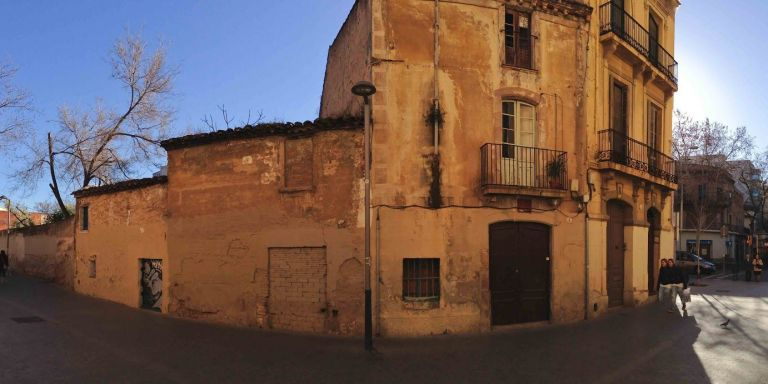The historical and cultural heritage of a city is an invaluable part of its identity. In the case of Barcelona, the wealth of heritage is abundant and one of its neighborhoods, Sant Andreu de Palomar, houses a treasure that has been patiently awaiting restoration for eight long years.
The houses on Pont Street, located in this historic neighborhood, are about to receive the attention they deserve after the new municipal government finally awarded the renovation work.
Sant Andreu de Palomar is one of the oldest and richest neighborhoods in Barcelona. Its streets tell stories that go back centuries, including the remains of the Rec Comtal, an ancient Roman aqueduct with two thousand years of history that used to supply water to the city.
In addition, the neighborhood is home to vestiges of the Molí Vell and the medieval road that connected with Santa Coloma de Gramenet. These historical elements form a cultural tapestry that reflects the evolution of Sant Andreu over the centuries.
Among Sant Andreu’s heritage treasures are the Segadors chapel, a jewel of the 17th century, and the Fabra i Coats site, which has been converted into a modern library, although its oldest building has disappeared.00
Sant Andreu de Palomar: a neighborhood with a rich heritage
The process of rehabilitating the houses on Pont Street has been a long and complicated journey. These buildings were gradually acquired by the City Council, which initially demolished some of them in an area designated as a green zone.
Among these houses, numbers 6 and 8 were in a precarious state of preservation and needed urgent intervention. These two buildings will undergo structural consolidation works to prevent them from falling into ruin.
The Barcelona City Council has allocated a budget of 183,943 euros for these works, and the company Rècop Restauraciones Arquitectónicas will be in charge of carrying out this restoration in a period of approximately five months.
The rehabilitation project
The rehabilitation project of the houses on Pont Street includes a series of essential works for their conservation and enhancement.
Among the planned tasks are the reconstruction of the roofs using recovered or new wooden beams that maintain the original morphology, the consolidation of walls, stairs and other existing elements, as well as the closing of the openings in the facades of the buildings.
In the case of number 8, Calle del Pont, it is planned to improve the visual relations with the surrounding heritage elements through the construction of a skylight. Special attention will also be paid to the stability of the outer enclosure wall, which dates back to 1870.




